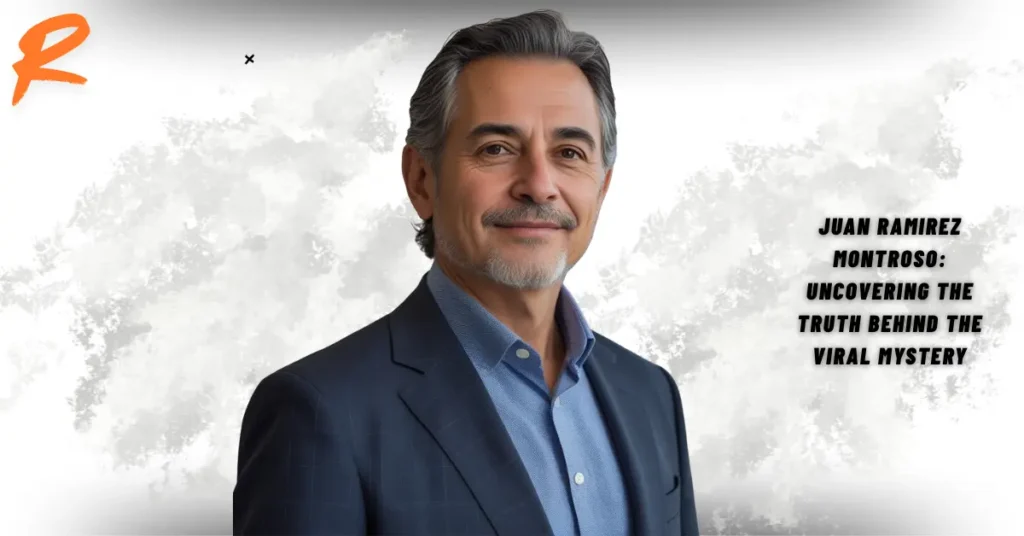Juan Ramirez Montroso is the mystery name that’s been popping up across TikTok, social media threads, and speculation sites — and now people are desperate to know: who is he, is he real, and why is his name everywhere?
In this article, we’ll walk through all the competing stories, examine what’s verifiable (if anything), explore cultural and viral dynamics, and help you think critically about mystery content online.
What Sparked the Juan Ramirez Montroso Phenomenon
Over the past few months, Juan Ramirez Montroso began trending on social platforms almost out of nowhere. Users started posting short videos asking “Who is Juan Ramirez Montroso?” or claiming to have uncovered parts of his backstory. Hashtags spread, speculative threads emerged, and soon enough the name felt omnipresent.
Because there are no strong, verifiable sources confirming his identity, the mystery only deepened. As people filled gaps with rumors, contradictions multiplied — which fed further interest and made the name stick longer.
Competing Narratives: What People Claim
Online, there are at least three main narratives competing for legitimacy around Juan Ramirez Montroso:
The Artist / Intellectual Version
Some believe he was a culturally rooted creative — sculptor, thinker, or cultural commentator — someone with Spanish or Latin American heritage. Under this version, his name carries symbolic weight.
The Criminal / Dark Past Theory
Other accounts assert he was tried for serious crimes, sentenced to death (sometimes in the 1980s or 1990s), and died in prison. This angle often comes with dramatic legal details.
The Viral Hoax / Fictional Construct
A third faction argues that Montroso doesn’t “really” exist in any official record — that his entire identity might be a kind of viral creation, a name that grew from speculation and repetition rather than fact.
Fact-Check: What (If Anything) We Can Verify

The troubling truth is, very little holds up under scrutiny. Search for court records, newspaper archives, academic references — almost nothing comes up reliably. No confirmed legal transcripts, no historical document that unambiguously ties to “Juan Ramirez Montroso.”
Because of that, the default stance must be uncertainty. Where claims exist, they often conflict (e.g. about age, charges, death date). Until a credible primary source surfaces — say, a legal registry, a newspaper archive, or a government record — Montroso’s identity remains in limbo.
Cultural & Linguistic Layers Behind the Mystery
One underexplored angle is why Juan Ramirez Montroso sounds so plausible, and why it resonates across language communities:
- Name structure: “Juan” + “Ramirez” + “Montroso” uses familiar Spanish naming conventions. This gives the name a sense of authenticity in Latin America or Spanish-speaking populations.
- Semantic echoes: “Ramirez” and “Montroso” carry roots in Spanish etymology; they evoke heritage, lineage, and identity.
- Relatability of anonymity: In a world saturated with known personalities, someone entirely unknown but “sounding real” is more intriguing than yet another public figure.
That cultural plausibility makes the name stick. It crosses language boundaries, but still feels like it belongs somewhere — which helps speculation thrive.
How Viral Mysteries Spread: A Model
Why did the Juan Ramirez Montroso story gain traction? Because it fits the pattern of countless digital myths:
- Seed mention: A user posts a short, curious “Who is him?” video or thread.
- Algorithmic amplification: Platforms promote engaging content, even if unverified.
- Replication & variation: Others copy, remix, embellish the story.
- Myth hardening: Repetition gives the narrative weight; people treat speculation as fact.
This pattern is common in internet folklore — viral mystery is a genre unto itself.
Timeline: The Rise of the Name
| Phase | Description |
| Initial spark | Scattered mentions or comments referencing “Juan Ramirez Montroso” |
| Social surge | TikTok, Instagram Reels, meme posts, question videos |
| Media pickup | Low-authority blogs and news aggregator sites rehash the narratives |
| Contradiction spread | Multiple versions of his life, legal claims, age differences, death dates |
| Ongoing debate | People continue searching, posting, debating, and speculating |
Because the name lacked strong origin documentation, the timeline remains hazy — but these phases are consistent with how other digital mysteries evolve.
Read More >>> Nadeshda Ponce – Artist, Entrepreneur & Wellness Advocate
Why People Still Care About Juan Ramirez Montroso
So here’s why his name hasn’t faded:
- Curiosity gap: Humans detest unknowns. When a name has no clear story, attention intensifies.
- Collective speculation: Once dozens or hundreds engage, it becomes a group investigation.
- Memetic potential: The mystery is memeworthy; users remix it for humor, shock, or intrigue.
- Symbolic resonance: The name becomes a projection — a stand-in for lost histories, injustice, or anonymity.
Even if Montroso never existed in a documented sense, his presence online still speaks volumes about our modern culture of mythmaking.
What We Can Learn from This Case
The Juan Ramirez Montroso phenomenon offers several lessons:
- Skepticism is essential: Always question viral claims. Look for primary sources, not just retellings.
- Label speculation: When writing or publishing, distinguish “reported” from “confirmed.”
- Educate on media literacy: Help audiences understand how rumors spread and why they often feel real.
- Respect ambiguity: Sometimes the strongest insight is admitting we don’t know the truth — yet.
Montroso’s story nudges us to think not just about one name, but about how narratives shape collective belief.
Frequently Asked Questions
Who is Juan Ramirez Montroso? *
He’s a trending name on social media. There is no confirmed public figure or record matching the full identity claimed by various sources.
Is Juan Ramirez Montroso real or fictional?
We can’t say with certainty. The bulk of evidence (or lack thereof) points toward a highly speculative or composite identity.
Why is his name trending?
Because mystery sells. People are drawn to unanswered questions, and his name offered a blank canvas for speculation.
Where did the narrative start?
Likely on short video platforms or forums — no clear origin is documented, which is part of the intrigue.
What does this story teach us?
It’s a reminder to question, to search for evidence, and to recognize how easily misinformation (or half-truths) can become widespread.
Final Thoughts
Juan Ramirez Montroso may never be tied to a real, verifiable person — but that doesn’t weaken the value of his story. In fact, it strengthens it as a case study in how online culture, rumor, and collective imagination intersect.
Whether he’s an obscure figure, a myth, or something in between, his name lives in the spaces between fact and speculation. And that space is where many of our digital stories are born today.






